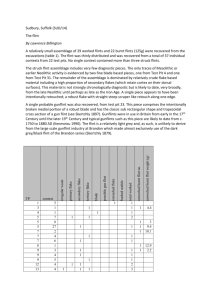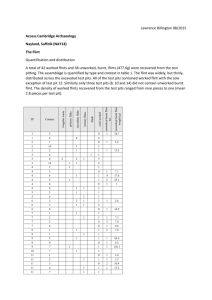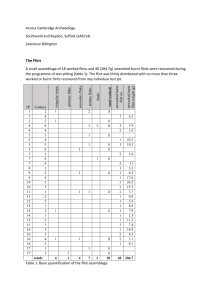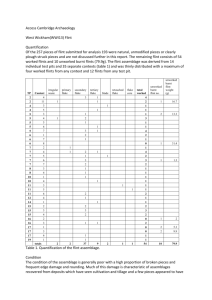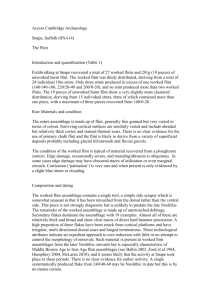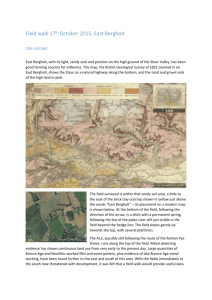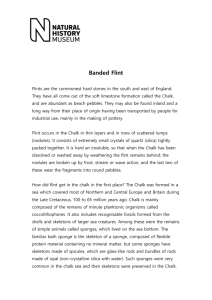Access Cambridge Archaeology BUL/13 – Lawrence Billington The
advertisement
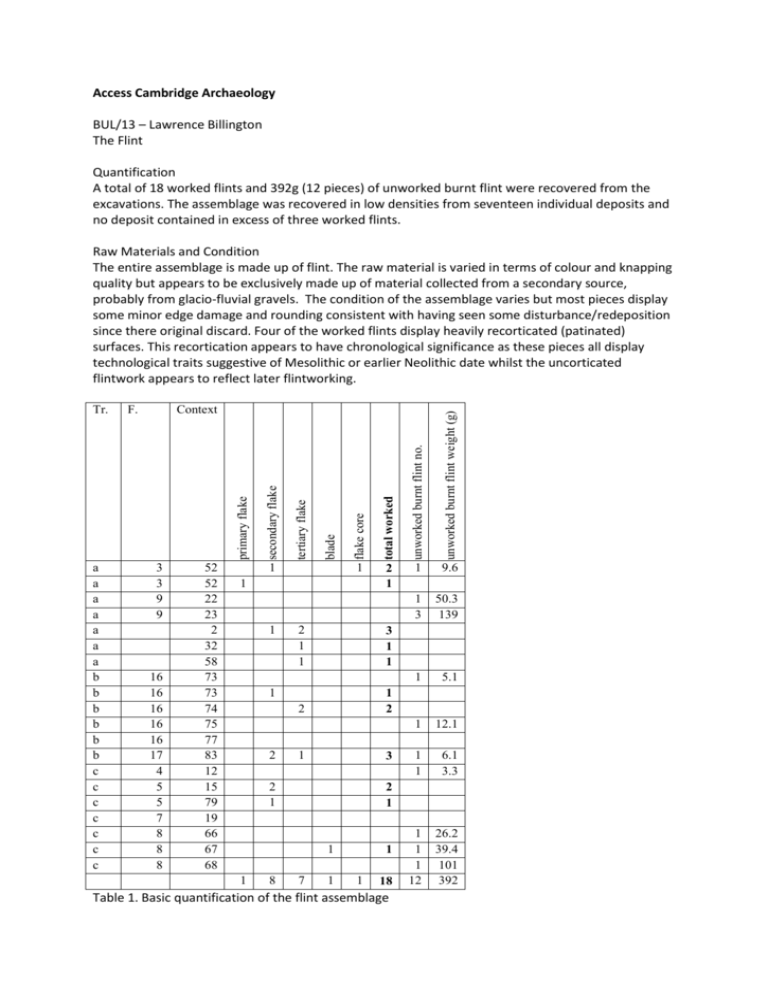
Access Cambridge Archaeology BUL/13 – Lawrence Billington The Flint Quantification A total of 18 worked flints and 392g (12 pieces) of unworked burnt flint were recovered from the excavations. The assemblage was recovered in low densities from seventeen individual deposits and no deposit contained in excess of three worked flints. Raw Materials and Condition The entire assemblage is made up of flint. The raw material is varied in terms of colour and knapping quality but appears to be exclusively made up of material collected from a secondary source, probably from glacio-fluvial gravels. The condition of the assemblage varies but most pieces display some minor edge damage and rounding consistent with having seen some disturbance/redeposition since there original discard. Four of the worked flints display heavily recorticated (patinated) surfaces. This recortication appears to have chronological significance as these pieces all display technological traits suggestive of Mesolithic or earlier Neolithic date whilst the uncorticated flintwork appears to reflect later flintworking. 16 16 16 16 16 17 4 5 5 7 8 8 8 52 52 22 23 2 32 58 73 73 74 75 77 83 12 15 79 19 66 67 68 1 1 3 1 1 2 1 2 1 3 2 1 8 1 9.6 1 3 50.3 139 1 5.1 1 12.1 1 1 6.1 3.3 1 1 1 12 26.2 39.4 101 392 2 1 1 1 2 1 2 1 1 1 2 total worked flake core blade 1 1 unworked burnt flint weight (g) 3 3 9 9 unworked burnt flint no. a a a a a a a b b b b b b c c c c c c c tertiary flake Context secondary flake F. primary flake Tr. 7 1 1 1 18 Table 1. Basic quantification of the flint assemblage Dating and composition The corticated flintwork referred to above appears to represent the earliest component of the assemblage. These four pieces include three flakes from [32], [58] and [73] all of which show traces of systematic blade based working. The distal end of a fine prismatic blade was also recovered from [67], this piece has some later retouch or damage cutting its corticated surface. All of this material is likely to represent Mesolithic or perhaps earlier Neolithic activity. The remainder of the assemblage is made up of flake based flintworking waste, generally showing evidence for fairly expedient core reduction using direct hard hammer percussion. There are, however, considerable differences in the technological traits of this material with relatively fine systematically produced flakes alongside much cruder pieces. To some extent this is likely to reflect chronological differences with the more systematically produced material relating to Neolithic flintworking whilst the more expedient material is characteristic of Bronze Age assemblages (Ford et al 1984). A single core was recovered from [52]. This pieces is a carefully worked bifacial keeled core, such cores are especially common in later Neolithic assemblages in East Anglia (Healy 1985). Reference Healy, F. 1985 ‘The struck flint’, in Shennan, S.J., Healy, F., and Smith, I.F., The excavation of a ring-ditch at Tye Field, Lawford, Essex, Archaeologial Journal 142, 177–207
